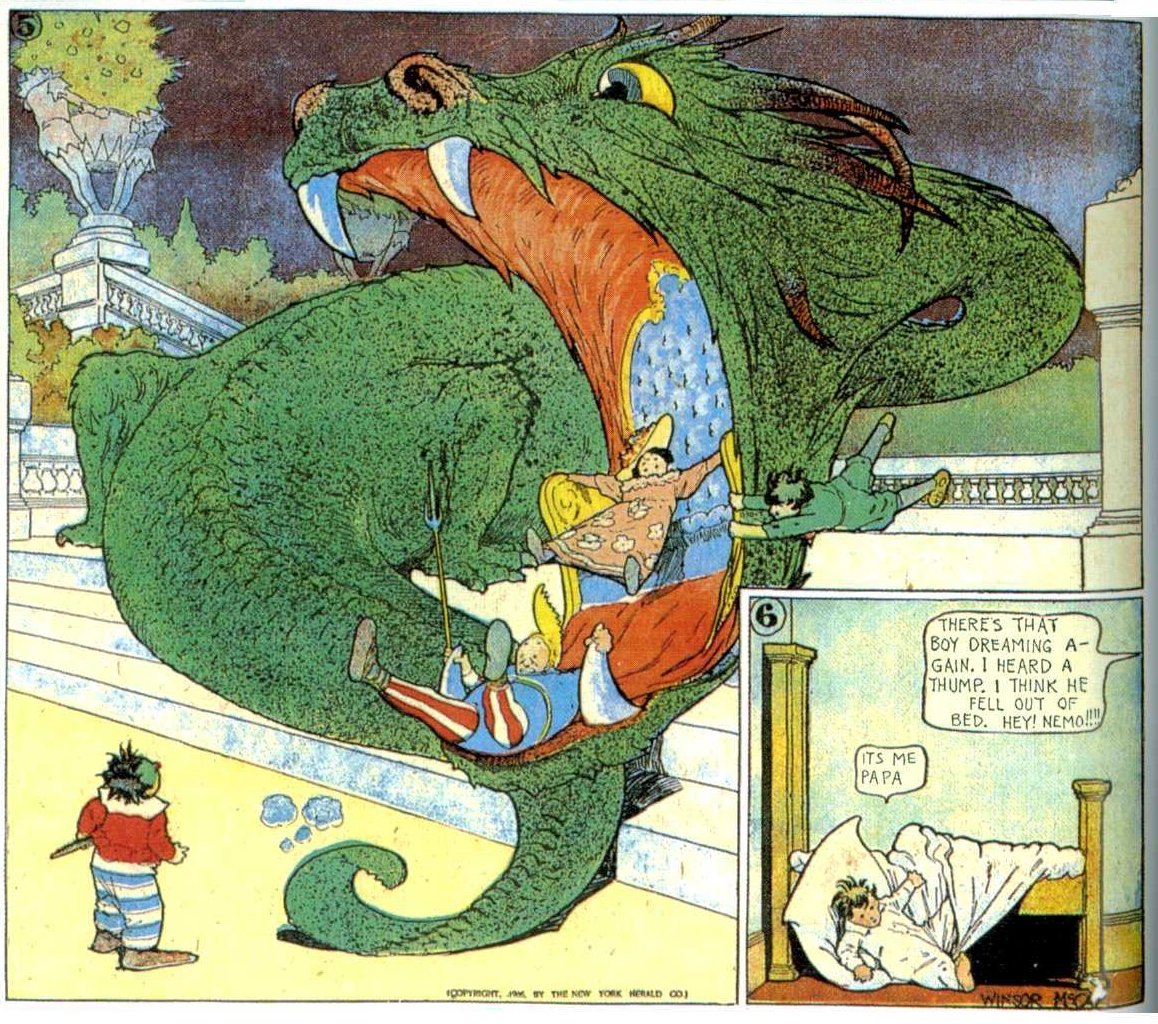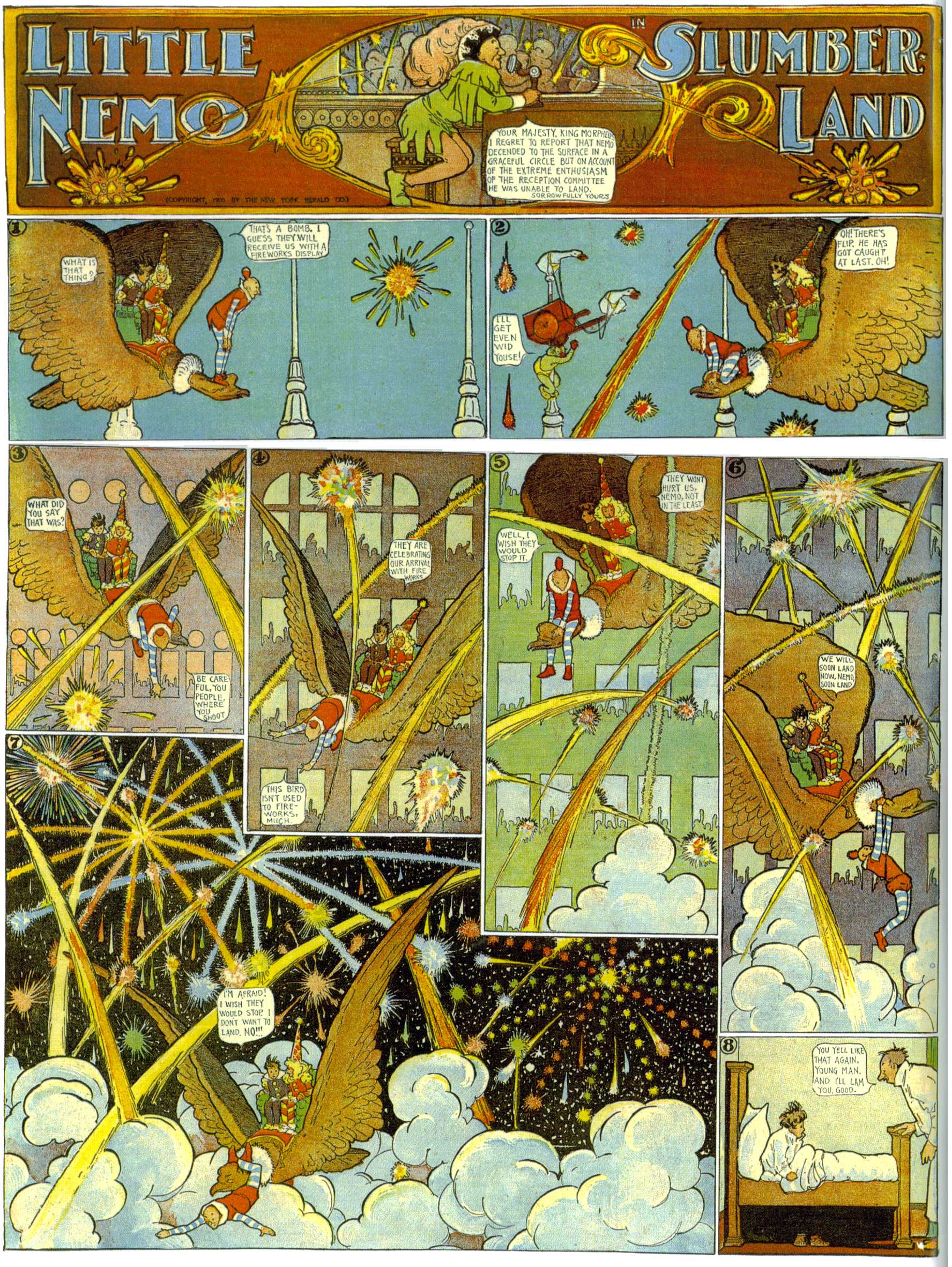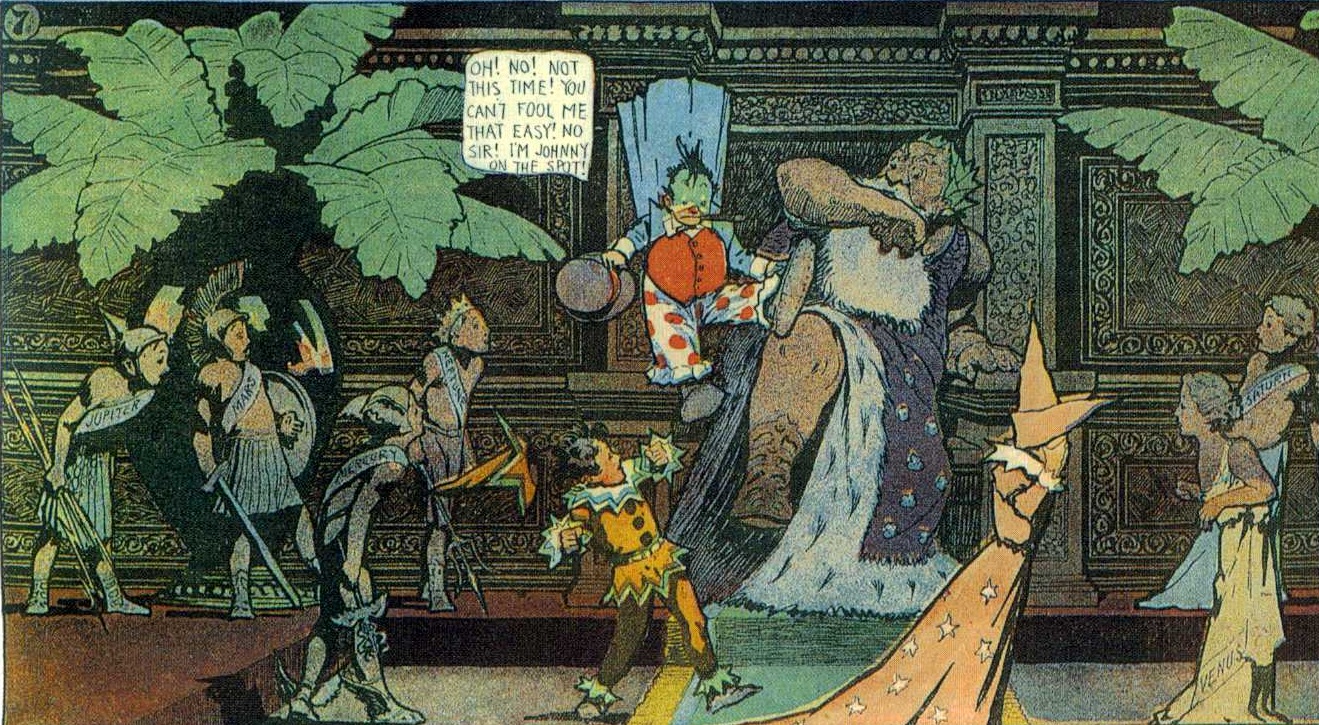Winsor McCay’s 1905 Chicago Herald series, “Little Nemo in Slumberland,” is, to this day, one of the most underrated comic collections ever created.

Many kids today don’t know what a comic strip is, let alone a newspaper, and what they were/are used for. That’s because our society has turned its attention away from the thought-provoking paper-bound entertainment that was the Sunday comic strip section and literary masterpieces like Goosebumps (well, not a masterpiece, but you get my point) to a brighter, more “interactive” medium sure to suck the last bit of imagination from our thickening skulls. Such was not the case 40, even 20 years ago when I could remember rushing for the Sunday paper to view the latest Calvin and Hobbes comic strip, which is one of the most incredible series of any medium ever to exist.
Sidenote: Bill Watterson has emerged from obscurity to sketch up more gems.
But before there was ever a Bill Watterson or a Calvin and Hobbes or even a Peanuts, there was the trailblazing cartoonist Winsor McCoy, who created the fictional character Little Nemo and his elaborate world called ‘Slumberland’ — a series to which most modern-day comic strips owe their form and flow. There was even a cartoon movie based on Little Nemo and his adventures (spot on, to say the least). It depicted many of Winsor’s imaginative creations and told the incredible story of Little Nemo and his unforgettable trip to Slumberland.
Here’s an excerpt from Wikipedia:
Little Nemo is a fictional character created by American cartoonist Winsor McCay. Nemo was originally the protagonist of the comic strip Little Nemo in Slumberland. The full-page weekly strip depicted Nemo having fantastic dreams that were interrupted by his awakening in the final panel. The strip is considered McCay’s masterpiece for its experiments with the form of the comics page, its use of color, its timing and pacing, the size and shape of its panels, perspective, architectural and other detail.
Little Nemo in Slumberland ran in The New York Herald from October 15, 1905, until July 23, 1911; the strip was renamed In the Land of Wonderful Dreams when McCay brought it to William Randolph Hearst’s New York American, where it ran from 1911 until July 26, 1914. When McCay returned to the Herald in 1924, he revived the strip, and it ran under its original title from Aug 3, 1924, until December 26, 1926, when McCay returned to Hearst.
The strip shows McCay’s understanding of dream psychology, particularly of dream fears—falling, drowning, impalement. This dream world has its own moral code, perhaps difficult to understand; breaking it has terrible consequences, as when Nemo ignores instructions not to touch Queen Crystalette, who inhabits a cave of glass—overcome with his infatuation, he causes her and her followers to shatter, and awakens with “the groans of the dying guardsmen still ringing in his ears”.
Wikipedia
A group of guys even put together a successful Kickstarter to honor the late McCay and his fabulous work in helping father the comic strip as we know it.
Unlike today’s comic strips, in the early 1900’s McCay was given a whole page in the newspaper to which he would draw Nemo’s adventures. Here’s a page:

Much as things often go, McCay never received the acclaim he deserved during the Little Nemo comic strip run. However, long after its last issue, it has received several revivals, including the previously mentioned movie in the 80’s and even an NES video game in 1990. Google even put together this interactive Google Doodle to honor this 107th birthday.
Long live the imagination and artistic masterpieces like McCay’s Little Nemo in Slumberland.




Leave a Reply